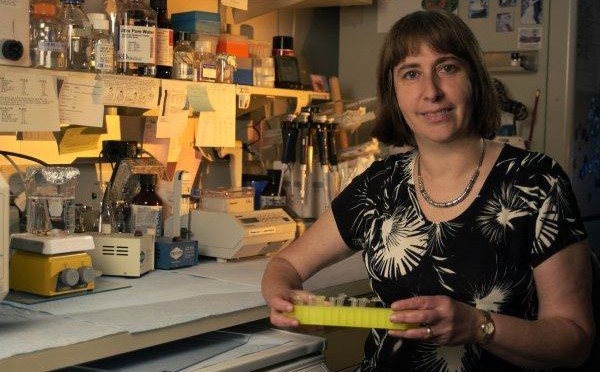As a physician and a scientist, I study a rare disorder, Gaucher disease. I have been motivated to continue to study Gaucher disease for the past 25 years because I feel that our understanding of basic aspects of this disorder are still lacking, and that my patients with Gaucher disease, whom I have grown to know and love, will benefit from these discoveries.
Parkinson disease is a common disorder that is known to have a complex inheritance. This means that unlike Gaucher disease, which results from mutations in one specific gene, Parkinson disease can have many causes and many genes likely contribute to how the disease presents. Patients with Parkinson disease develop a resting tremor that often begins on one side, but they can also have slowed movements, unstable posture and gait, and at times, dementia. It affects about 1.5% of the population over age 65, and the risk increases with advancing age. There are disorders associated with Parkinson disease called the Lewy body dementias that have similar manifestations, but more progressive dementia.
Shortly after we discovered an association between Gaucher disease and Parkinson disease, we noted that when we carefully asked about each patient’s family history, there seemed to be many instances of Parkinson disease among relatives of patients with Gaucher disease. About 25 % of patients surveyed had a parent, sibling or grandparent with Parkinson disease or a related dementia. This caused us to speculate whether Gaucher carriers might also be at risk for Parkinson’s disease.
The Link is Confirmed – The first evidence of this came from brain bank samples. When we evaluated DNA samples from patients who died of Parkinson disease, we found that 14% carried mutations in the Gaucher gene. This was so unexpected that at first no one would believe it. Journals would not publish our initial results. But the finding persisted. There were studies in the USA, Israel, Japan, and Europe that confirmed our results, that a relatively high number of patients with Parkinson disease were carriers for Gaucher disease. In 2008, sixteen Parkinson centers came together and screened over 5000 patients with Parkinson disease, and an equal number of matched controls without Parkinson disease, for mutations in the Gaucher gene, glucocerebrosidase. The combined results definitively showed that patients with Parkinson disease were over 5 times more likely to carry a glucocerebrosidase mutation, and the study was finally published in the New England Journal of Medicine. This past year, we again came together to look at mutations in glucocerebrosidase in patients with the related disorder dementia with Lewy bodies. Here, the risk for having a mutation was even higher- over 8 times that found in controls.
Now this is a widely accepted finding. Glucocerebrosidase (deficient enzyme in Gaucher disease) mutations are considered to be the most frequent known genetic risk factor for Parkinson disease and for dementia with Lewy bodies. However this does not mean that everyone with Gaucher disease, or that all Gaucher carriers will develop Parkinson disease. After all, in order to develop Parkinson disease many different factors likely come into play. Glucocerebrosidase may merely be one of these risk factors.
So why is this important? Well for one thing, insights that we gain from the study of Gaucher disease may have a far reaching impact. As we better understand all of the effects related to the deficiency of glucocerebrosidase, we will better understand Gaucher disease, but in addition, we can learn about basic pathways that may be impaired in Parkinson disease. For example, glucocerebrosidase works to break down lipids in the lysosome, an organelle that handles the breakdown products of the cell. The discovery of this association has now focused a great deal of Parkinson research on the lysosome, and it likely plays a role in the development of Parkinson pathology.
Most Exciting – But perhaps most exciting is the concept that a therapy that can impact Gaucher disease may also prove beneficial for Parkinson disease. There are many companies and centers highly invested in discovering new therapies for Parkinson disease. It is very likely that these approaches may lead to new treatments that could be used for Gaucher disease. Since Parkinson disease is a disorder that affects the brain, these discoveries could make a difference for the neuronopathic forms of Gaucher disease, which have been so hard to treat.
Research on Rare Disorders is Important – So don’t ever let people discount why research into rare disorders is so important. Discoveries related to one group of diseases are likely to have benefit not only for the small patient population so needing the research, but advances and treatments can have important implications for others with far more common disorders.
Ellen Sidransky, M.D. – Head – Molecular Neurogenetics Section, National Institutes of Health, Bethesda, Maryland, USA
